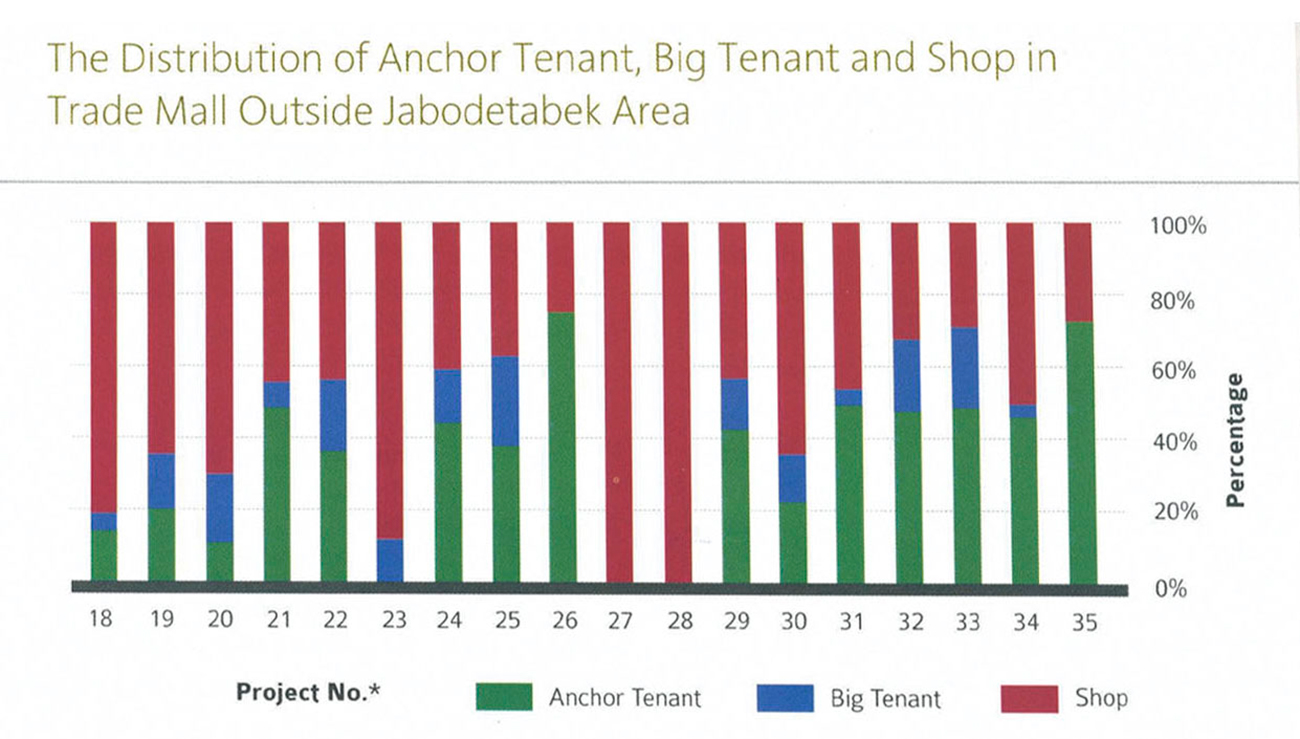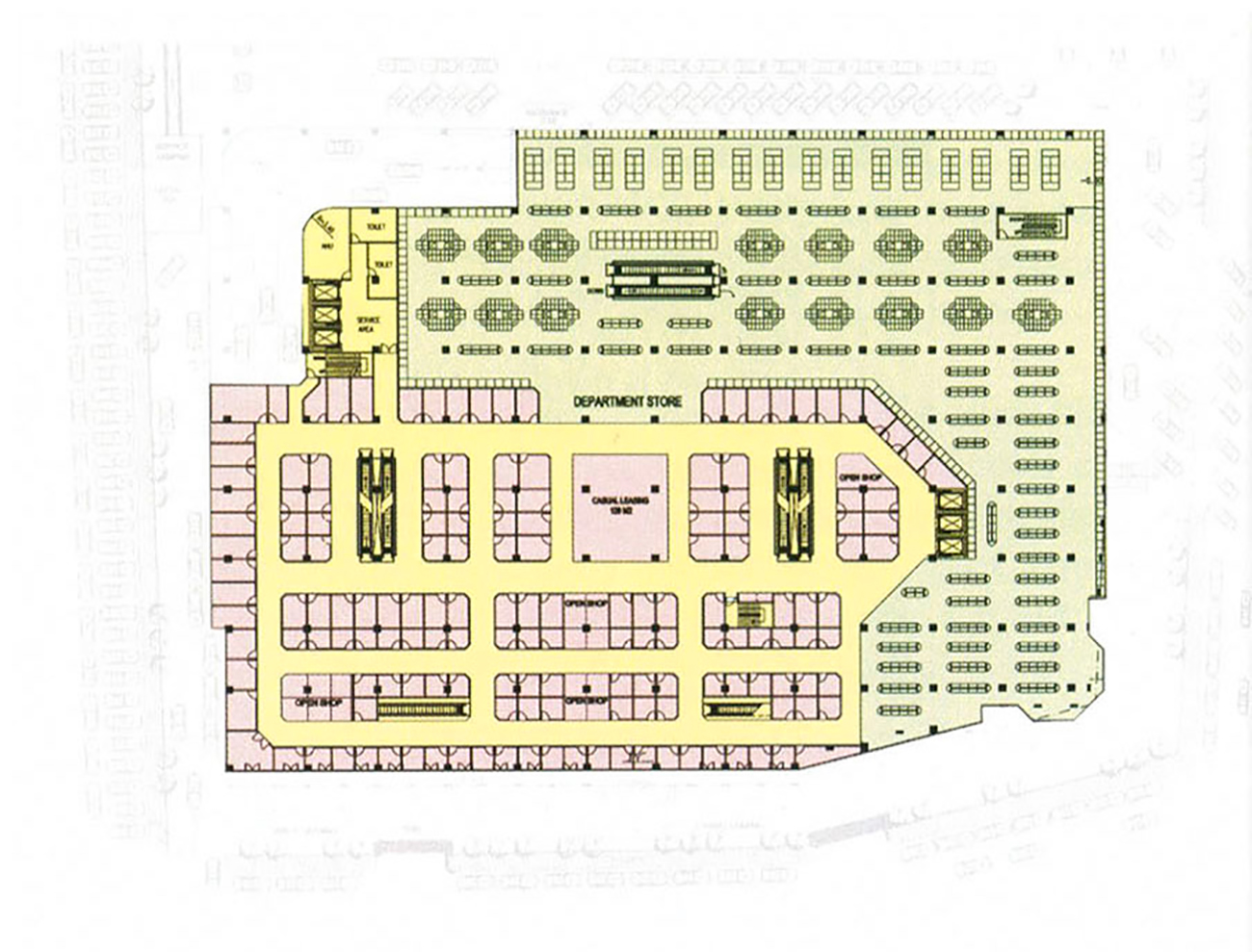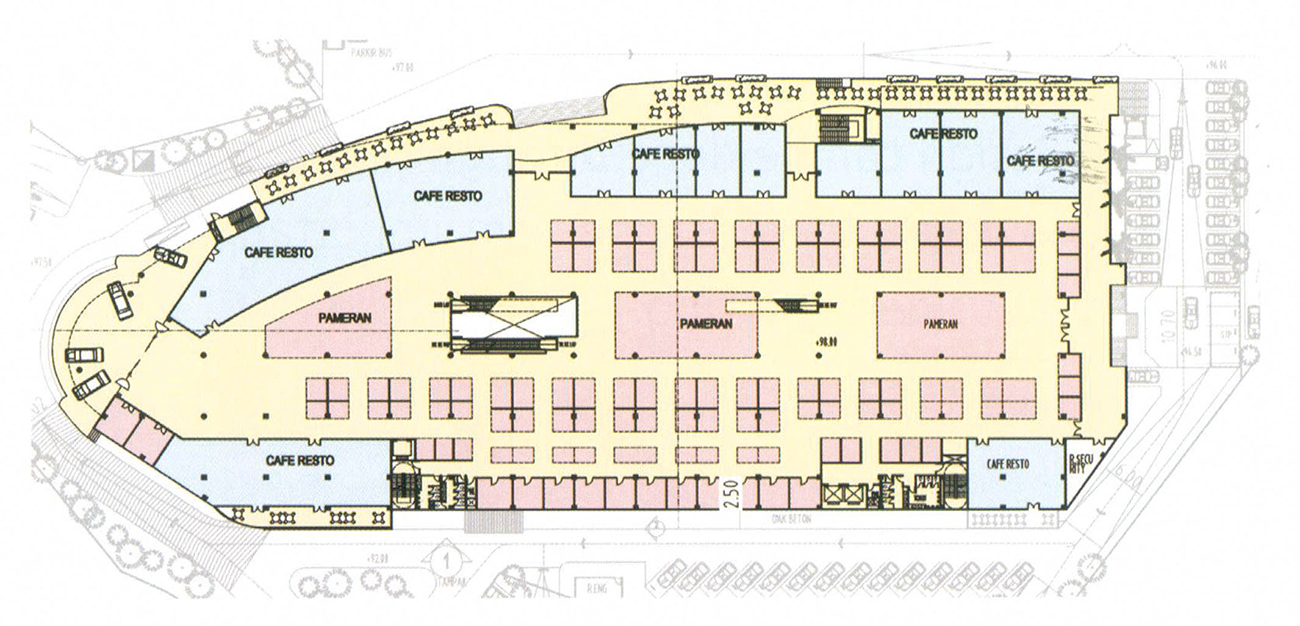Trade malls that we see around us nowadays are the result of evolution towards time which considers public needs and interest.
It is the reason some famous trade malls in Indonesia appear to offer comfort and various facilities. However if we look back to the original concept, trade mall is a concept representing a mall with a small shop.
The journey of the trade mall concept started from a crisis which did not allow a developer to access other sources of funding, other than the ‘prospective’ project itself. Before the crisis happened until now, we all know the concept of mall, an entertainment building function with comfortable outlook, comfortable environment, big and extravagant shopping arcades with supporting facilities such as restaurants, game stations, foodcourt, bookstores, cinema, etc, If we analyze thoroughly, those big and luxurious shopping centers with various functions mentioned above are leased. After the crisis, the development of trade centers was considered as the answer to the developers funding problems, but a series of problems emerged from this concept. How about trade malls? Trade mall is the combination of mall and trade center concept.


In trade malls, the shops are variously divided into small sizes just like in a trade center, ranging from 4 sqm, 5 sqm, 6 sqm, 8 sqm to 12 sqm. This is done to make the shop more affordable for end users (shop owners who will use the shops to do business). The items traded are also made varied, to appeal more movements of visitors from one shop to another.
Thus, in reality we uid be able to solve the funding needs of the developer to finance the trade mall project. The pre-designed shops with special size and placement are potential to be sold in advance, even before the project starts its development phase. The gain from selling these shops can be used as a starting capital to begin the building process. After dividing the shops into more affordable sizes, developers must also plan the type of items to be sold in those shops. Developers must be able to predict the amount and types of public needs, and produce a range of percentages of types of items to be sold, and arrange them in the right composition. The aim is to make the basic and marketable items to become an ‘appeal’ for other types of item. For instance, within one area block, one of the shops sells basic needs items, this shop will act as an appeal/ magnet for the other 3 shops selling non-basic needs items.

Other than thinking about costs, a developer must also think of ways to make his project a success and liked by the public. This is the role of the mall concept. Mall makes customers visit for various reasons other than buying a certain type of item. The comfortable environment of a mall with its interesting outlooks will make customers want to spend time more to stay. Not only that, the variety of items and facilities provided in a mall, also the placement of the items can attract customer movements, making the mall feel more lively, and at the same time providing the sellers/ shop owners with more profit.
If we look at the inside of a trade mall, we can see that there is a composition of shops and tenants, Shops are divided into smaller units and neatly placed by the flow of customers considering movements. While tenant is larger in nature, having functions department stores, game centers, food
courts, etc. It functions as a magnet in attracting the movement of customers to every corner of the building, as well as other floors. While shops act as a ‘selling’ factor in a trade mall, tenant also act as
‘mover’ factor and facilities to make customers have reasons to stay longer. By featuring the outlook, comfort, or other facilities like malls, will produce marketable output.
The Distribution of Anchor Tenant, Big Tenant, and Shop in Trade Mall Outside Jabodetabek Area


Trade Mall Categories Based on The Tenants Completeness
In this trade mall concept, there are 3 things that will become the task of a developer. The first task is to sell. After all shops are designed by analyzing cash flows and how many small shops will be sold, the shops and items to be sold need to be considered carefully to be profitable to the tenants (shop owners). Other than that, the composition of shops sold to the end users and investors also need to be considered well. End users are the direct users, while investors purchase the shops to re-sell them to gain profit.
If the number of shops sold to investors are too many, this will cause many shops to be closed during the opening period of the mall, while the opening moment of a mall is the critical moment which will give first impressions to the visitors. What if the visitors come only to see closed shops? Such a bad experience will make them reluctant to visit the mall the next time. This will cause the end users a great deal of loss and hence close their shops. Should these conditions happen over time, eventually the trade mall will face bankruptcy.
After planning and selling the shops, the second task of a developer is to build. Calculating the costs is an important initial step in a project development. This is to allow the developer to determine the
starting capital, calculating the revenue in a certain period of time, and the profitability gained eventually. These calculations will make the developer more at ease, that in a certain period of time, through selling the shops, tenant lease etc, the project could give a return of starting capital together with some profits in the shortest available time. With costs planned and calculated in the beginning,
the trade mall project can be realized.
Developers often forget their last important task, which is “to manage”. After the project is running, developers must ensure that the trade mall is functioning as it is planned, numerous ways can be done to make the mall crowded with customers with all kinds of activities, for instance by performing events to ‘introduce’ itself to the public. Performing sales in shops, or even some trade malls equipped themselves with multi-function halls where numerous events can take place there, such as seminars, wedding receptions, meetings or other types of important gatherings.

Therefore, we can conclude that a trade mall project is successful if it can gain profits for the main three parties, which are: developer, tenant (shop owners), and customers/visitors. All three have special bonds which affect each other, whereas if one party gains profits, the other two can gain similar things, and vice-versa.


“Therefore, we can conclude that a trade mall project is successful if it can gain profits for the main three parties which are: developer, tenant (shop owner), and customers/visitors.’’



